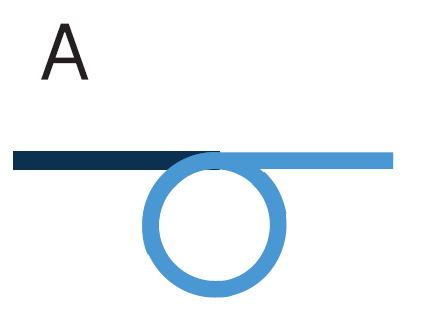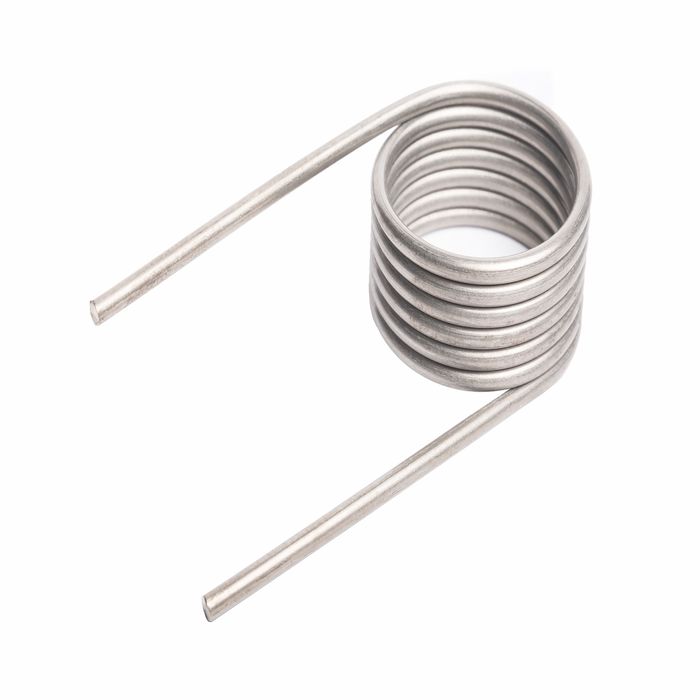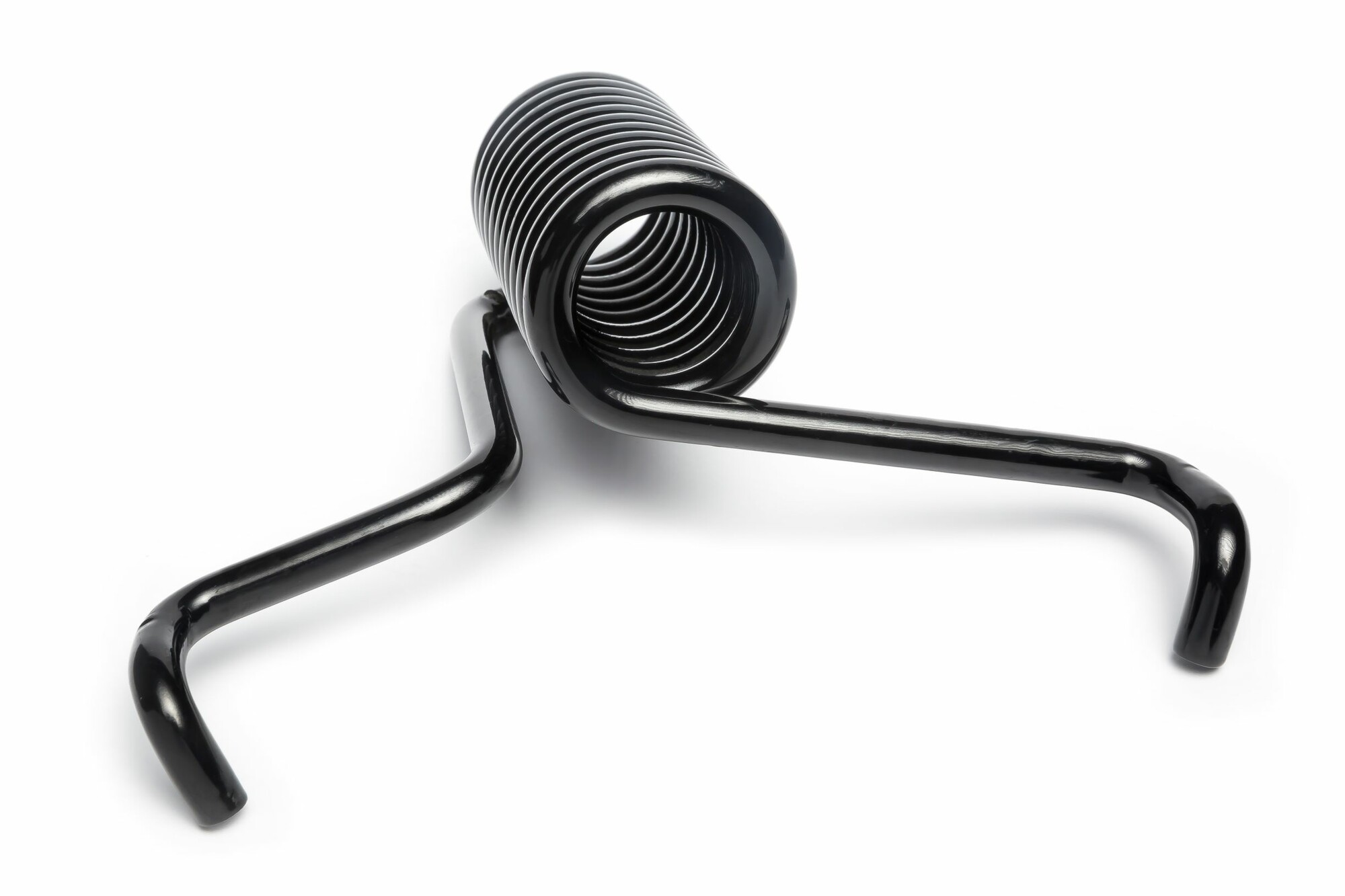We use cookies to make your experience better. To comply with the new e-Privacy directive, we need to ask for your consent to set the cookies. Learn more.
Blog - Calculating forces on torsion spring legs?
The force on a torsion spring lever is called a Moment. A moment depends on two factors, the length of the leg and the weight resting on the spring. With, among other things, the moment we calculate the needed torsion spring constant.
How does a torsion spring leg work?
The leg of a torsion spring is a lever. Thus, the leg provides a leverage effect. The leverage effect actually is; The longer the lever, the less force it takes to turn the torsion spring. The leverage effect applies to the force placed on the torsion spring.
We have an object of 9.8 Newton in terminal force. Mounted on a 10mm leg. Then the force is 9.8 * 10 = 98 Newtons.
The total power is multiplied by the factor of the leg. To absorb this force, we have a lever that is the spring constant times the number of degrees of rotation. The most ideal is that these two are equal to each other. The formula for this (thanks to Archimedes):(force * arm)left = right (force * arm)
It is known what force is required. What force is opposed to this has yet to be calculated. This is the force in the spring, times the number of degrees the spring has to turn. This is ultimately the spring constant. The leg, together with the desired Newton, determines how much force should be in the torsion spring.
Adjusting the legs of standard torsion springs thus has a significant influence on the required spring rate.
Calculating with legs on torsion springs
As an example the TS103020L. The spring constant (C) is 95.86 (N mm/°). The maximum twist is 70 degrees. This makes the maximum number of Newtons to be 6,710.2 moment (70 * 95.86). This torsion spring has a 90 mm leg. At the Maximum moment, with this leg, the maximum Newton sitting on the end of the leg is 74.55 Newtons (6,710 / 90 ). So on this leg a pressure of 7.6 kilograms will be the maximum.
We are now going to change the leg length. In situation one, we shrink the leg length. In situation two, we increase the leg length. The spring in both cases delivers maximum, spring rate 95.86 * 70 degrees of twist. The change in the leg does not change the spring rate.
The calculation of a smaller leg length also applies to the force, on a smaller position of the poker.
What happens if I attach a shorter leg to the torsion spring?
Situation with a smaller leg length. When changing a leg length, to 50 millimeters instead of 90 mm (-40 mm). Is the object of first 7.6 KG, so 74.55 Newton now gives a maximum moment of: 74.55 * 50 = 3.727.89 Newton. If we divide this again by the spring constant, 95.86 C (N mm/°). We get the result of 38.89 degrees of rotation.
So in short: Making a poker 40 mm shorter ensures that rounded, the spring turns 31 degrees less .(only on this spring) Or that the spring can hold more forces on the leg.
What happens if I attach a longer leg to the torsion spring ?
Situation with a bigger leg. When changing a leg length, to 120 mm instead of 90 mm (+30 mm). And the object is still 7.6 KG (74.55 N) we have a maximum moment of: 8,946. If we divide by the spring constant, we would have to twist this spring 93.32 degrees.
Only this spring has a maximum twist of 70 degrees. So with this leg will ensure that the spring breaks or bends over. If the spring has to continue to rotate 70 degrees, the spring rate of the spring will have to be adjusted. Then we divide the maximum moment (8946), divide by the degree of rotation (70). Then the spring constant would be 127.8 C (N mm/°).
So in short: Extending a leg on this torsion spring by 30 mm means that the spring rate has to be increased by 31.94 C (N mm/°).
The calculations.
To make it complete, here are the calculations to follow. With the side note that we do not recommend using a spring at maximum torque, due to a shorter lifespan.
Standard calculation: Leg length * object force (N) = Degree of rotation * spring rate (N mm/°)
Shorter Leg change: Leg new length * object force (N) =< Degrees of rotation * spring constant (N mm/°)
If:
(Leg Length New – Leg Length Old) * Object force (N) ≠ Degree of rotation (max) * Spring constant (N mm/°)
Then:((Leg Length New – Leg Length Old) * Force object (N)) / spring constant = Number of degrees of turn.
Longer Leg change: Leg new length * object force (N) = Degrees of rotation * spring constant (N mm/°)
If: (Leg Length New – Leg Length Old) * Object force (N) ≠ Degree of rotation (max) * Spring constant (N mm/°)
Then:((Leg Length New – Leg Length Old) * Force object (N)) / Degrees of rotation (max) = Required new spring constant.









